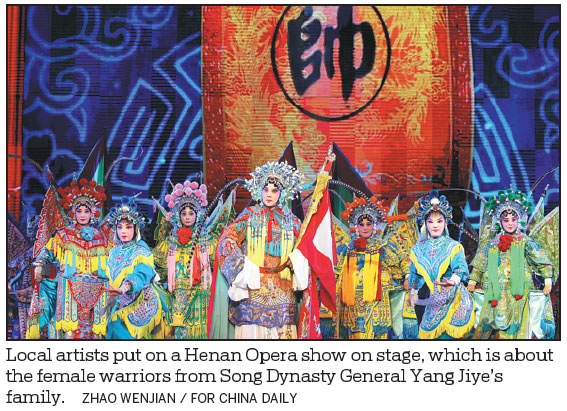Ancient legacies boost economy and tourism
Based on its long history and rich heritage, Kaifeng has used its cultural resources to boost economic growth and tourism development.

Kaifeng is an ancient city with a history of more than 4,100 years. It was the capital of eight dynasties and kingdoms, including the Northern Song (960-1127) and Jin (1115-1234) dynasties.
Historical records show that during the Northern Song, Kaifeng, which at the time was called Bianliang, was the largest city in the world and booming with culture and economy.
Over thousands of years, the people there have created a culture with strong local characteristics, which is still alive in today's daily life, religions, food, gardening, paintings, calligraphy, folklores, legends, operas and acrobatics.
Locals highly value filial piety, political integrity, patriotism and artistic tastes, which are embodied in the operas of local legendary figures including grand justice Bao Zheng, General Yang Jiye, poet Ruan Ji and painter Zhang Zeduan, to name a few.
At present, the Kaifeng authorities are using cultural legacies to enrich the spiritual well-being of residents and to boost the local economy.
One example is the integration of culture with tourism.
Local officials said Kaifeng's tourism development is mainly based on the protection and rational use of its cultural heritage.
For instance, Kaifeng has formed and implemented a set of strict regulations for protecting the ancient streets, buildings and the city walls since 2002.
The city wall, the Song Dynasty-style streets and the Yuhe Riveror the Imperial River, and other sites with strong local cultural elements are the major attractions in Kaifeng.
The most remarkable example of integrating culture with tourism is the Song Capital Imperial City, a resort reviving Kaifeng's ancient landscapes that were portrayed by Song Dynasty painter Zhang Zeduan in his Qingming Shanghe Tu, or Along the River During the Tomb Sweeping Festival. It also boasts a range of gardens, parks and an intangible cultural assets exhibition center.
During the three-day May Day holiday this year, Kaifeng received more than 3.8 million visits, growing 58 percent from the same period in 2018. Tourism revenue increased 61.1 percent to 3.07 billion yuan ($436 million).
Local cultural officials said the protection of cultural legacies is aimed at making them alive and pass them down.
For this purpose, the local government, businesses and even individuals have heavily invested in museums and projects for cultural heritage protection.
The city is home to 32 museums, including 21 invested in and operated by private businesses. The Kaifeng Museum is one of the largest in Henan province.
The museums have collected nearly 100,000 cultural relics and have received about 1.5 million annual visits in recent years.
The city has promoted its culture to the world through visits of artists, overseas performances of local operas and acrobatics as well as exhibitions.

(China Daily 11/15/2019 page12)














